Abstract
Accumulation of translocate during steady-state labeling of photosynthate was measured in the source leaf petioles of sugar beet (Beta vulgaris L. monogerm hybrid). During an 8-hr period, 2.7% of the translocate or 0.38 μg carbon/min was accumulated per cm petiole. Material was stored mainly as sucrose and as compounds insoluble in 80% ethanol. The minimum peak velocity of translocation approached an average of 54 cm/hr as the specific activity of the 14CO2 pulse was progressively increased. The ratio of cross sectional area required for translocation to actual sieve tube area in the petiole was 1.2. A regression analysis of translocation rate versus sieve tube cross sectional area yielded a coefficient of 0.76. The specific mass transfer rate in the petiole was 1.4 g/hr cm2 phloem or 4.8 g/hr cm2 sieve tube. Histoautoradiographic studies indicated that translocation occurs through the area of phloem occupied by sieve tubes and companion cells while storage occurs in these cells plus cambium and phloem parenchyma cells. The ability of the petiole to act as a sink for translocate is consistent with the concept that storage along path tissue serves to buffer sucrose concentration in the translocate during periods of fluctuating assimilation.
Full text
PDF
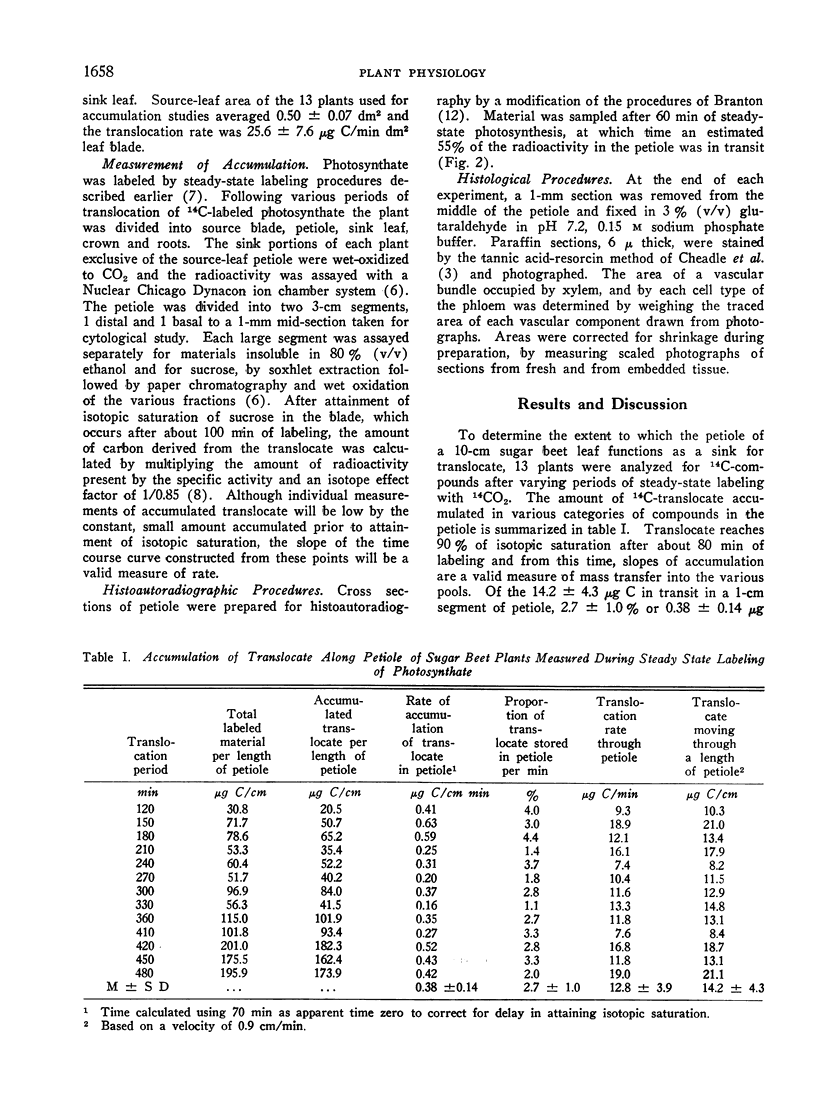

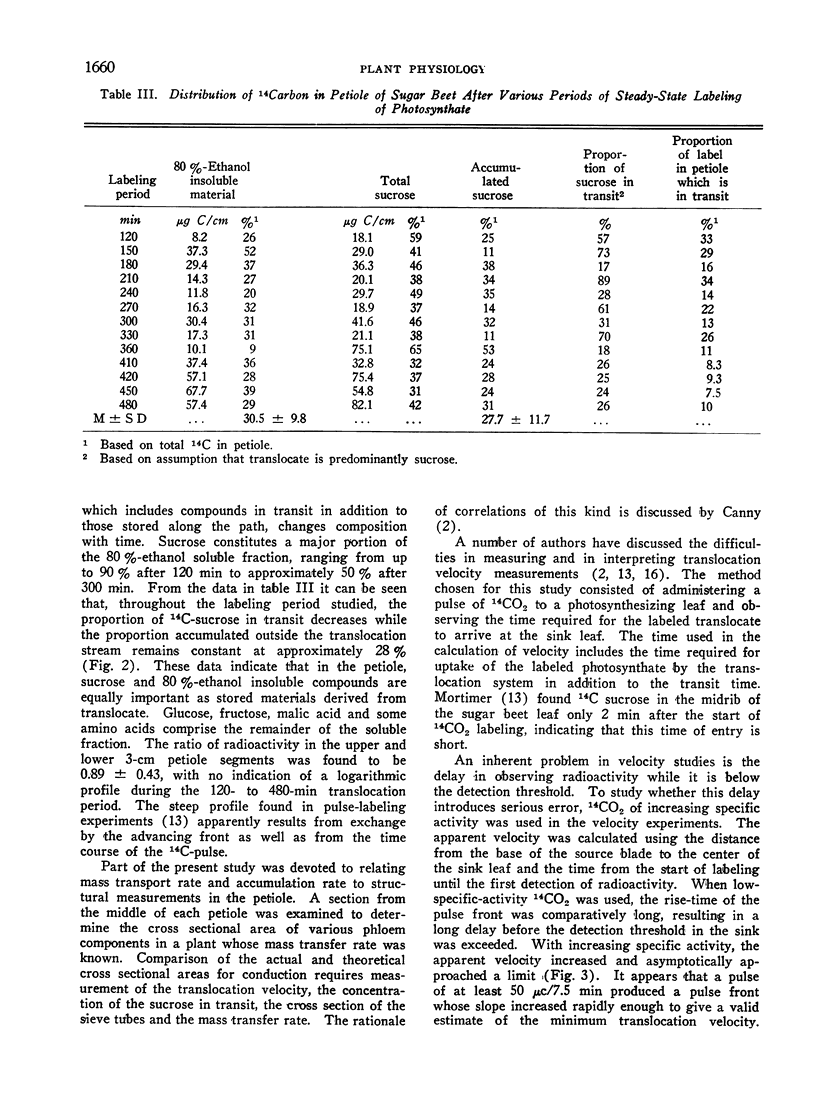
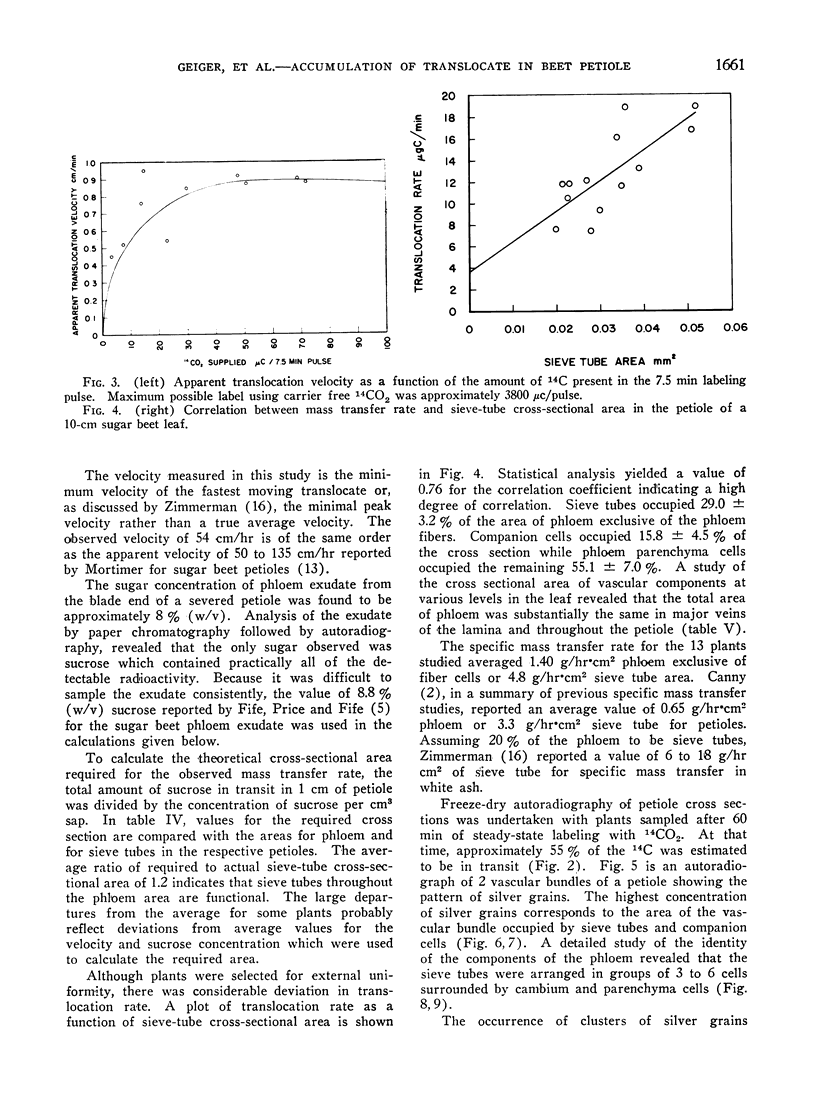

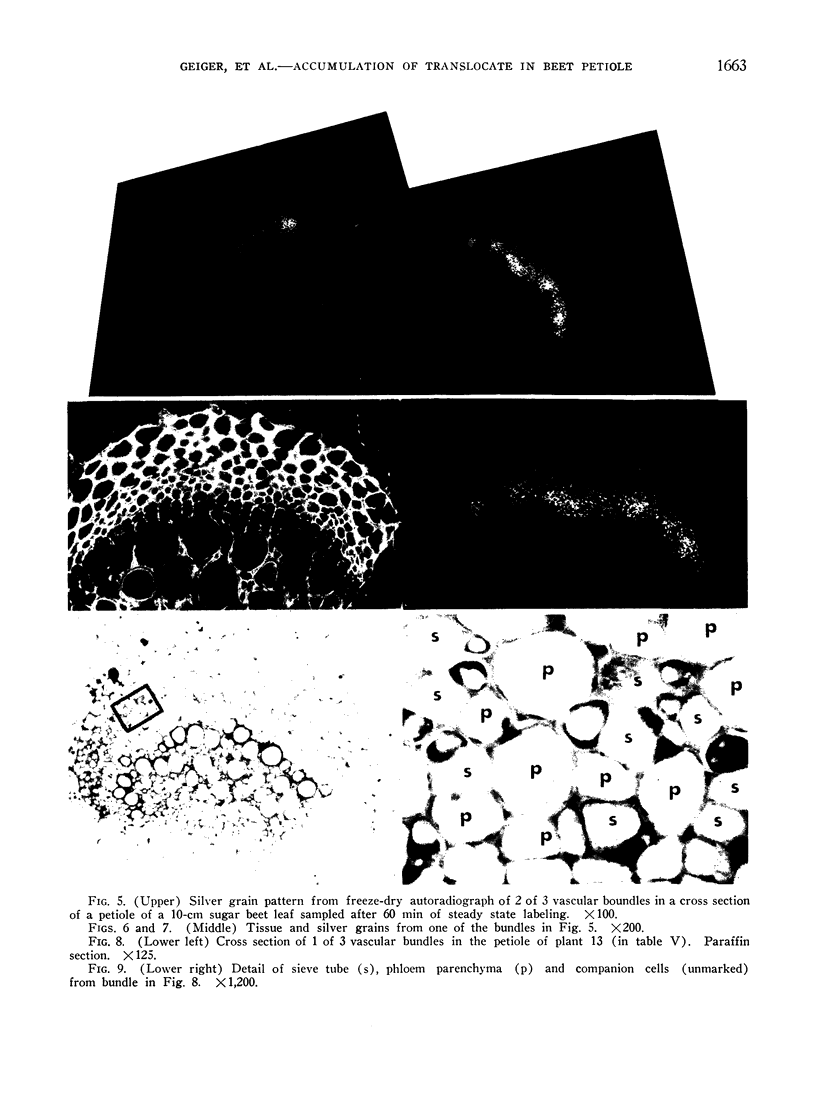
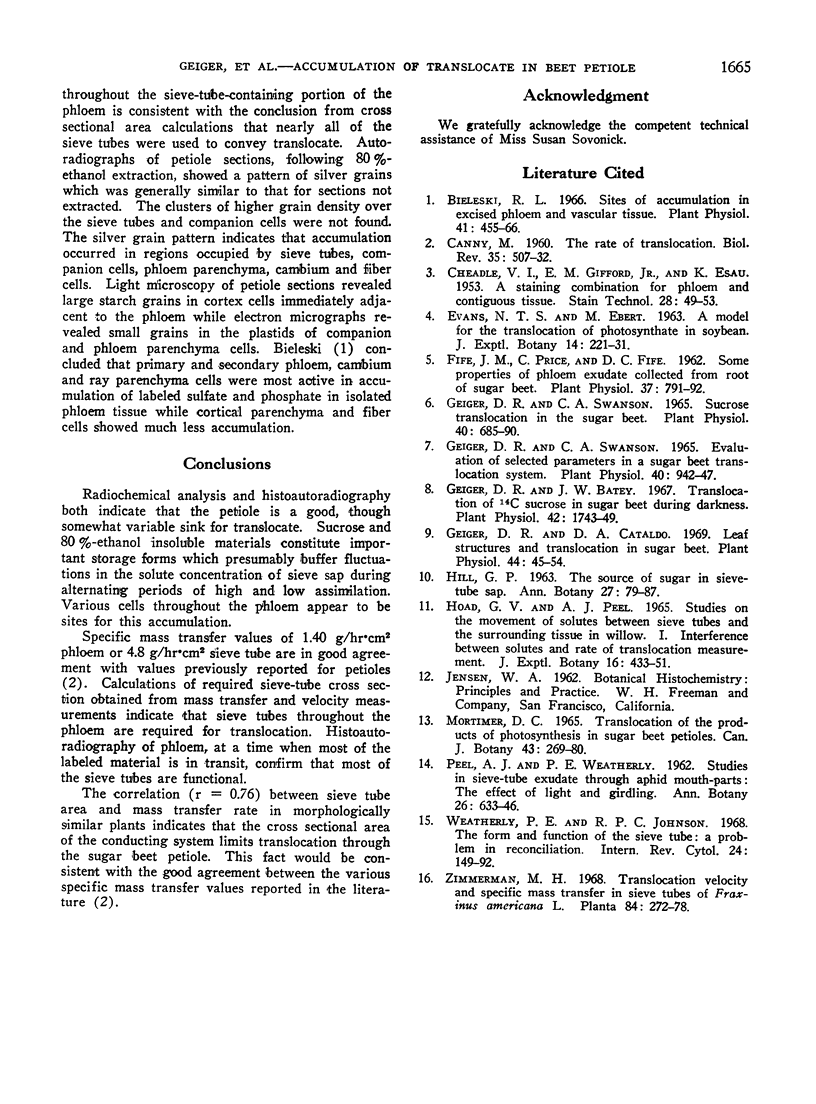
Images in this article
Selected References
These references are in PubMed. This may not be the complete list of references from this article.
- Bieleski R. L. Sites of accumulation in excised Phloem and vascular tissues. Plant Physiol. 1966 Mar;41(3):455–466. doi: 10.1104/pp.41.3.455. [DOI] [PMC free article] [PubMed] [Google Scholar]
- CANNY M. J. The rate of translocation. Biol Rev Camb Philos Soc. 1960 Nov;35:507–532. doi: 10.1111/j.1469-185x.1960.tb01525.x. [DOI] [PubMed] [Google Scholar]
- CHEADLE V. I., GIFFORD E. M., Jr, ESAU K. A staining combination for phloem and contiguous tissues. Stain Technol. 1953 Mar;28(2):49–53. doi: 10.3109/10520295309105101. [DOI] [PubMed] [Google Scholar]
- Fife J. M., Price C., Fife D. C. Some properties of phloem exudate collected from root of sugar beet. Plant Physiol. 1962 Nov;37(6):791–792. doi: 10.1104/pp.37.6.791. [DOI] [PMC free article] [PubMed] [Google Scholar]
- Geiger D. R., Batey J. W. Translocation of C Sucrose in Sugar Beet during Darkness. Plant Physiol. 1967 Dec;42(12):1743–1749. doi: 10.1104/pp.42.12.1743. [DOI] [PMC free article] [PubMed] [Google Scholar]
- Geiger D. R., Cataldo D. A. Leaf structure and translocation in sugar beet. Plant Physiol. 1969 Jan;44(1):45–54. doi: 10.1104/pp.44.1.45. [DOI] [PMC free article] [PubMed] [Google Scholar]
- Geiger D. R., Swanson C. A. Evaluation of Selected Parameters in a Sugar Beet Translocation System. Plant Physiol. 1965 Sep;40(5):942–947. doi: 10.1104/pp.40.5.942. [DOI] [PMC free article] [PubMed] [Google Scholar]
- Geiger D. R., Swanson C. A. Sucrose Translocation in the Sugar Beet. Plant Physiol. 1965 Jul;40(4):685–690. doi: 10.1104/pp.40.4.685. [DOI] [PMC free article] [PubMed] [Google Scholar]
- Weatherley P. E., Johnson R. P. The form and function of the sieve tube: a problem in reconciliation. Int Rev Cytol. 1968;24:149–192. doi: 10.1016/s0074-7696(08)61399-6. [DOI] [PubMed] [Google Scholar]



